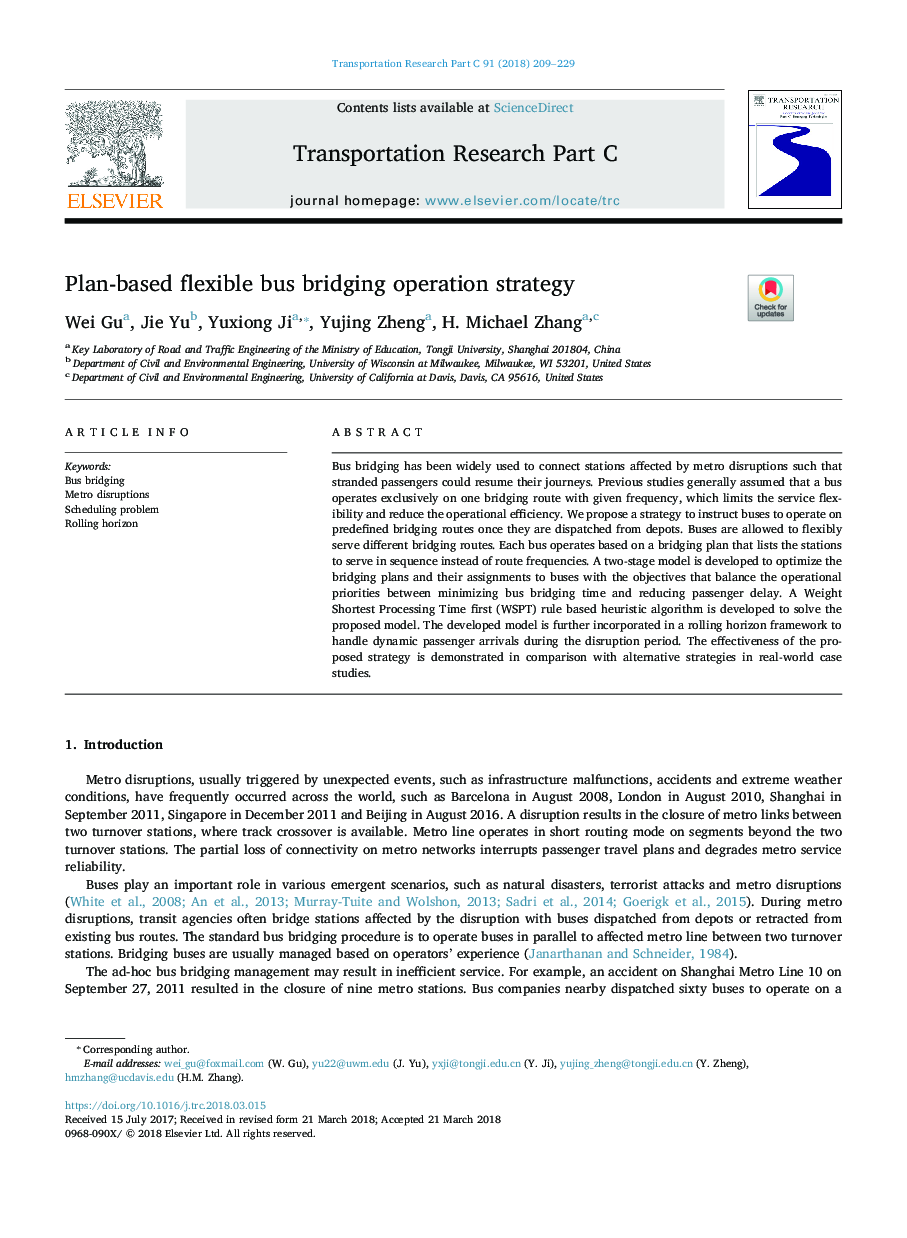| Article ID | Journal | Published Year | Pages | File Type |
|---|---|---|---|---|
| 6935931 | Transportation Research Part C: Emerging Technologies | 2018 | 21 Pages |
Abstract
Bus bridging has been widely used to connect stations affected by metro disruptions such that stranded passengers could resume their journeys. Previous studies generally assumed that a bus operates exclusively on one bridging route with given frequency, which limits the service flexibility and reduce the operational efficiency. We propose a strategy to instruct buses to operate on predefined bridging routes once they are dispatched from depots. Buses are allowed to flexibly serve different bridging routes. Each bus operates based on a bridging plan that lists the stations to serve in sequence instead of route frequencies. A two-stage model is developed to optimize the bridging plans and their assignments to buses with the objectives that balance the operational priorities between minimizing bus bridging time and reducing passenger delay. A Weight Shortest Processing Time first (WSPT) rule based heuristic algorithm is developed to solve the proposed model. The developed model is further incorporated in a rolling horizon framework to handle dynamic passenger arrivals during the disruption period. The effectiveness of the proposed strategy is demonstrated in comparison with alternative strategies in real-world case studies.
Keywords
Related Topics
Physical Sciences and Engineering
Computer Science
Computer Science Applications
Authors
Wei Gu, Jie Yu, Yuxiong Ji, Yujing Zheng, H. Michael Zhang,
